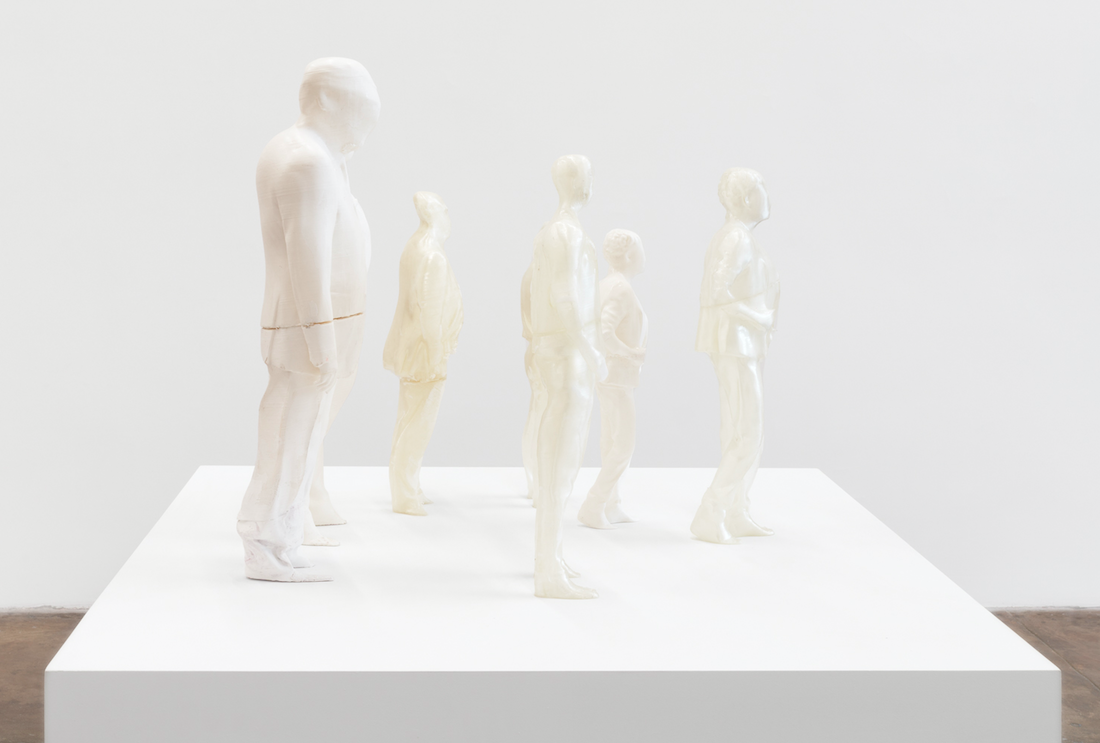Having gone through a recent breakup, the theme of Sam Anderson’s show, “Lunch Hour,” felt all too familiar as the artist examines cyclical narratives of desire and disappointment. At first glance, the show at Tanya Leighton gallery feels like a departure for those who know Anderson’s work. But upon closer inspection, the sculpture’s strange, eerie, and DIY qualities are undeniably Anderson. This new body of work marks Anderson’s first presentation of 3D printed sculpture (which, of course, she taught herself). These creepy hybrid 3D printed assemblages represent archetypal lovers in culture, such as the cat from “Pepé Le Pew” and the Big O from Shel Silverstein’s book “The Missing Piece,” which are embedded in our psyche whether or not we consciously subscribe to them. A clunky square pedestal sits in the middle of the gallery upon which a haunt of faceless men synchronistically lurk toward us like zombies. These ghostly figures represent the ambiguously bodied men of the artist’s past. I can’t help but project my own collection of ex-lovers onto Anderson’s faceless bodies, the memories of whom are blurred but ever-present. The gallery director encouraged me to watch the 1960’s British film Lunch Hour, from which the show takes its title. The film is about the beginning of a workplace affair between a young woman and her older male supervisor—and is, unfortunately, another familiar narrative that personally haunts me. Applying a Marxist-Feminist framework to the film reveals tensions between desire and fantasy both informed by power relations and engendered by the conditions of capitalism. It feels serendipitous that I should recently decide to re-read Lauren Berlant’s book Cruel Optimism, in which she writes, “the subordinated sensorium of the worker, whose acts of rage and ruthlessness are mixed up with forms of care, is an effect of the relation between capitalism’s refusal for futurity in an overwhelmingly productive present and the normative promise of intimacy, which enables us to imagine that having a friend, or making a date, or looking longingly at someone who might, after all, show compassion for our struggles, is really where living takes place.”
Like Berlant, Anderson’s work leads me to question the narratives of desire that pull me along my journey for human connection and examine the cruel optimism embedded in my pleasure quest. I wonder what drives me to still feel excited by the prospect of new love in the wake of so much suffering, haunted by the trauma of failed relationships and sexual violence. Yet, as Anderson asserts, we persist, trapped in our prisons of pleasure and pain.
Tanya Leighton
4654 W Washington Blvd
Los Angeles, CA 90016
On view through August 13, 2022


